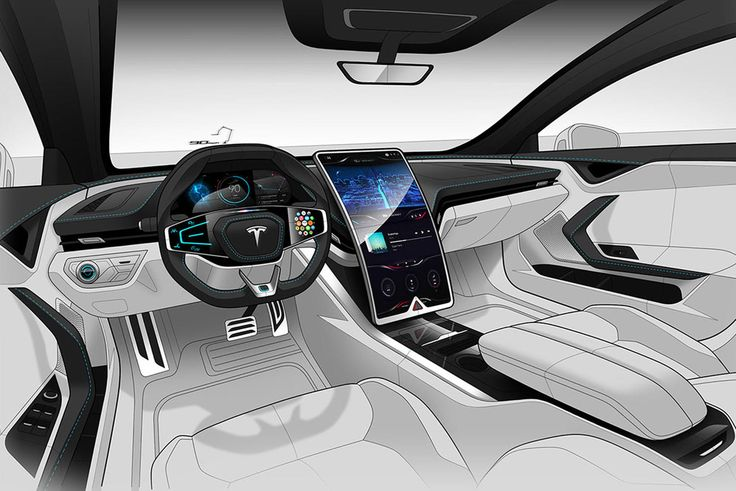In a groundbreaking report by Bloomberg Green, it was revealed that AI-driven electric vehicles (EVs) will account for nearly 30% of all urban transportation by 2025. This seismic shift is not just transforming how we commute but also redefining our urban landscapes. In this article, we delve into how AI-driven EVs are shaping the future of urban mobility in 2024, exploring the synergy between artificial intelligence, electric vehicles, and urban planning. Readers will gain insights into the latest technological advancements, practical applications, and future trends in this rapidly evolving sector.
AI-Powered EVs: Transforming Urban Landscapes
The Rise of AI in Electric Vehicles
Artificial intelligence is revolutionizing the EV industry by enhancing vehicle performance and safety. According to TechCrunch, AI is integrated into EV systems to optimize routes, improve battery management, and facilitate autonomous driving. Companies like Tesla and Waymo are leading the charge with advanced AI algorithms that allow vehicles to ‘learn’ from real-world data, increasing efficiency and reducing energy consumption. For instance, Tesla’s Full Self-Driving (FSD) software uses AI to navigate complex urban environments, making city driving safer and more efficient.
Autonomous Driving: The Future of Urban Transport
Autonomous EVs are no longer a distant dream. In 2024, cities like San Francisco and Phoenix are already piloting autonomous taxi services. InsideEVs reports that these AI-driven vehicles can reduce traffic congestion by up to 30%, thanks to their ability to communicate with each other and optimize routes in real-time. This technology not only enhances urban mobility but also significantly lowers the carbon footprint of cities by minimizing idle times and optimizing energy use.
- Key Benefits of Autonomous EVs:
- Traffic Reduction: AI algorithms optimize traffic flow and reduce congestion.
- Safety Enhancements: Real-time data processing helps prevent accidents.
- Environmental Impact: Reduced emissions through efficient route management.
Smart Cities and AI-Driven EV Integration
Collaborative Urban Planning
As AI-driven EVs become more prevalent, urban planners are rethinking city infrastructures. According to Wired, smart cities are integrating EV-friendly policies, such as dedicated lanes and smart traffic lights that communicate with vehicles. This collaboration between technology and urban planning ensures that the growth of AI-driven EVs aligns with sustainable development goals. Cities like Amsterdam and Singapore are at the forefront, implementing smart grids and charging solutions to support this transition.
Charging Infrastructure: The Backbone of EV Mobility
A seamless charging experience is crucial for the widespread adoption of AI-driven EVs. PV Magazine highlights that innovative charging solutions, such as wireless charging pads and ultra-fast chargers, are being deployed in urban areas. Companies like BYD and Volkswagen are investing heavily in expanding the charging infrastructure to meet the growing demand. By 2024, it is expected that urban areas will have charging stations every 5 kilometers, ensuring that EV drivers can charge conveniently and efficiently.
- Top Charging Solutions:
- Wireless Charging Pads: Allow for convenient, cable-free charging.
- Ultra-Fast Chargers: Reduce charging time to minutes instead of hours.
- Smart Charging Networks: Optimize energy distribution and reduce peak loads.
Practical Guide to Embracing AI-Driven EVs
How to Choose the Right AI-Driven EV
When considering an AI-driven EV, it’s essential to evaluate factors such as range, charging options, and technological features. Brands like Rivian and Lucid Motors offer models with cutting-edge AI capabilities and impressive range. According to Autocar, comparing models based on these features can help potential buyers make informed decisions.
- Considerations for Choosing an AI-Driven EV:
- Range and Battery Life: Ensure the vehicle meets your commuting needs.
- AI Features: Look for advanced safety and navigation technologies.
- Charging Infrastructure: Verify availability of charging stations in your area.
Where to Buy and What to Compare
Buying an AI-driven EV involves more than just visiting a dealership. Online platforms and EV exhibitions, such as the annual Electric Vehicle Symposium, provide opportunities to explore different models and technologies. Reuters Mobility advises prospective buyers to compare prices, incentives, and features across brands like Hyundai, Nissan, and Ford EV to find the best fit.
- Buying Tips:
- Explore Online Marketplaces: Access a wide range of models and deals.
- Attend EV Expos: Gain firsthand experience and knowledge.
- Utilize Incentives: Research government incentives to reduce purchase costs.
Conclusion: The Road Ahead for AI-Driven EVs
As we navigate the roads of 2024 and beyond, AI-driven EVs are poised to revolutionize urban mobility. The integration of artificial intelligence with electric vehicles not only promises to enhance transportation efficiency but also supports the broader goal of creating sustainable and livable cities. For readers intrigued by this transformative journey, staying informed and engaged with the latest developments is crucial. Will you be part of this exciting evolution? Share your thoughts and experiences with AI-driven EVs and join the conversation on the future of urban mobility.
In conclusion, the fusion of AI and EV technology is setting the stage for a smarter, greener future. As we embrace these innovations, the possibilities for improving urban life are limitless. Stay tuned to witness the exciting developments in AI-driven electric vehicles as they continue to shape the cities of tomorrow.

